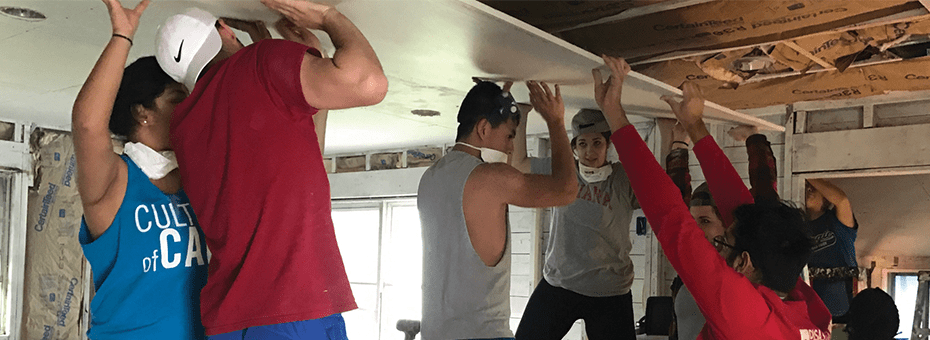by Zack Rosenburg
When we (Liz McCartney and I) first realized that sustaining continuous improvement in our work required us to become an organization of problem solvers, we also discovered that we were not thrilled with the phrase continuous improvement, which felt a bit like a hamster on a wheel. And so, with the input of our board member, former President of UPS Jerry Matters, we instead referred to this fundamental mindset of looking for problems to solve as constructive dissatisfaction.
During AmeriCorps orientation in New Orleans (which happens four to six times a year to accommodate staggered starting dates) we have a TSSC advisor come in and give a half day of training on the philosophy of TPS. Members learn about respect for people, bringing problems to the surface, and knowing whether we are ahead or behind. They learn about identifying waste and how to solve problems. Even if they do not have perfect recall following this training they have at least been introduced to the ideas.
Teams are then taught to work through each of the seven problem-solving steps together:
- Go see the problem at the point of occurrence.
- Collect facts (a record of events) and data (measurements of those events) regarding the problem.
- Set a future target condition and date for completion.
- Perform root cause analysis using the 5 Whys.
- Analyze the factors involved, including the people, the materials or machines, and the methods used.
- Analyze the proposed countermeasures for effects on the organization.
- Create a plan: who does what, when, in order to put the countermeasures in place?
It is important to note that Toyota emphasizes finding countermeasures to problems, not solutions. A solution sounds like there is one right answer. But we know that a better countermeasure to a problem might be found in the future and that any countermeasure is likely to create new problems, even as it “solves” the immediate one.
This improvement work itself calls for ongoing “constructive discontent.” But we intend to maintain a disciplined focus on this effort. Creating a positive, problem-solving culture encourages flexibility and creativity.
Read the entire article at: https://www.lean.org/LeanPost/Posting.cfm?LeanPostId=1047

